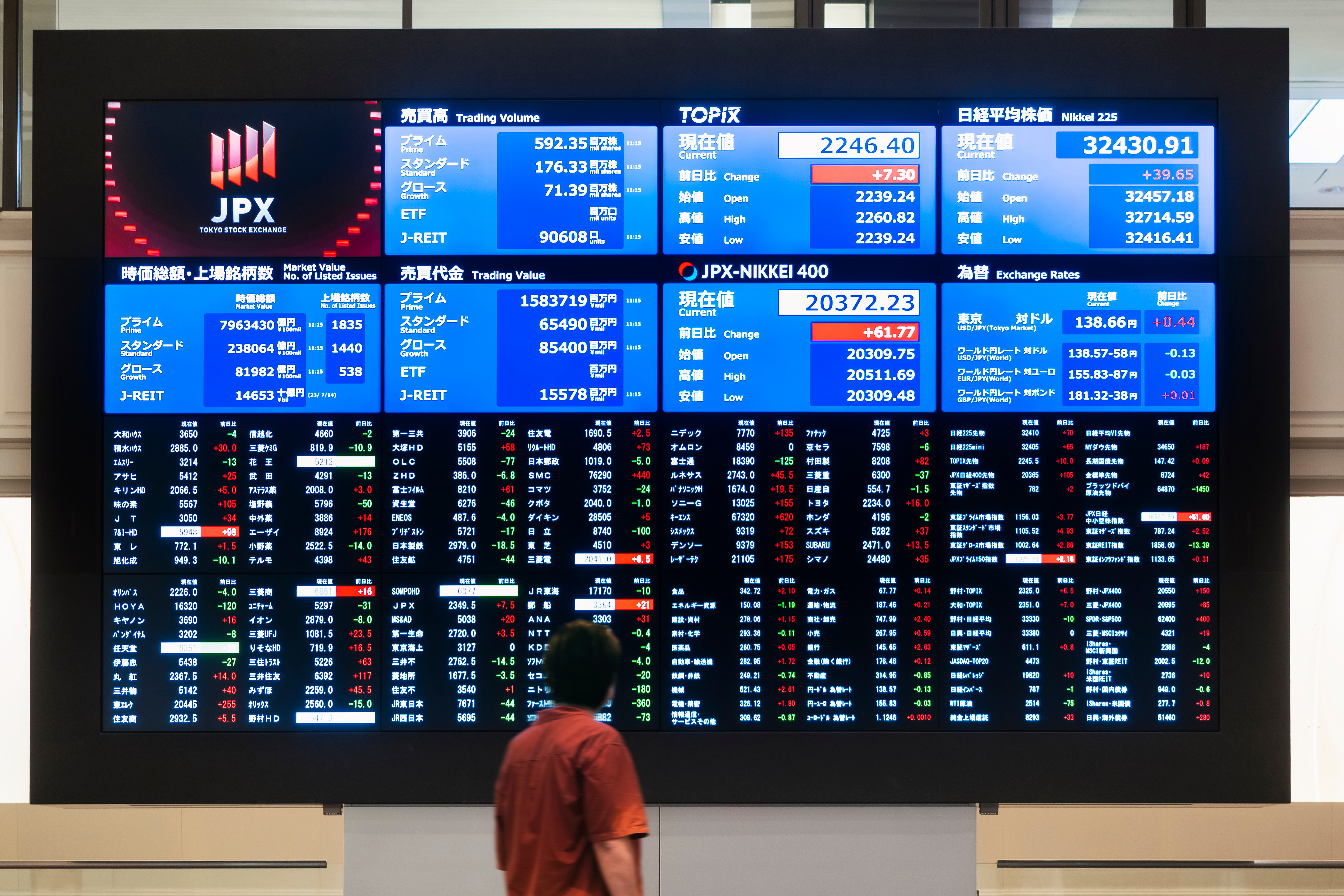IC Trading Europe Fundamental Forecast | 31 July 2025
What happened in the Asia session?
Japanese yen (strengthened), Chinese/Hong Kong equities (declined sharply), copper (plunged), and Korean won (gained despite tariffs). Central bank policy divergence, weak Chinese economic momentum, ongoing trade policy adjustments, and mixed responses to U.S.-Asia trade deals. Cautiously defensive, with investors weighing weak Chinese data against potential benefits from new trade agreements and steady monetary policy from major central banks.
The Asia session was characterized by mixed reactions to central bank decisions and economic data, with weakness in China offset partially by policy stability in Japan and new trade arrangements, though overall sentiment remained cautious amid ongoing global trade uncertainties.
What does it mean for the Europe & US sessions?
Markets are opening the European and U.S. sessions with cautious optimism but high sensitivity to central bank language, trade negotiation outcomes, and corporate earnings. The day is loaded with potential catalysts: the Fed’s rate statement, volatile tariff headlines, critical inflation data, and key earnings reports—particularly from the world’s largest tech and auto firms. The euro and European equities remain vulnerable to trade fallout, while the dollar and U.S. stocks are steady but poised for quick moves on fresh news.
The Dollar Index (DXY)
Key news events today
Core PCE price index m/m (12:30 pm GMT)
Employment cost index q/q (12:30 pm GMT)
Unemployment claims (12:30 pm GMT)
What can we expect from DXY today?
The US Dollar Index extended its rally for a fifth straight session, climbing above 99.9 on July 30. This marks a gain of more than 3% for the month and puts the dollar at its strongest levels in over five weeks. The Federal Reserve held interest rates steady at its July 30 policy decision, as expected. However, Chair Powell’s cautious tone, emphasizing data dependence and pushing back expectations of a September rate cut, provided new tailwinds for the dollar.
Central Bank Notes:
- The Board of Governors of the Federal Reserve System voted unanimously to maintain the Federal Funds Rate in a target range of 4.25% to 4.50% at the July 29–30, 2025, meeting, keeping policy unchanged for the fifth consecutive meeting.
- The Committee reiterated its objective of achieving maximum employment and inflation at the rate of 2% over the longer run. While uncertainty around the economic outlook has diminished since earlier in the year, the Committee notes that challenges remain and continued vigilance is warranted.
- Policymakers remain highly attentive to risks on both sides of their dual mandate. The unemployment rate remains low, near 4.2%–4.5%, and labor market conditions are described as solid. However, inflation is still somewhat elevated, with the PCE price index at 2.6% and core inflation forecast at 3.1% for year-end 2025, up from earlier projections; tariff-related pressures are cited as a contributing factor.
- The Committee acknowledged that recent economic activity has expanded at a solid pace, with second-quarter annualized growth estimates near 2.4%. However, GDP growth for 2025 has been revised downward to 1.4% (from 1.7% projected in March), reflecting expectations of a slowdown in the coming quarters.
- In the revised Summary of Economic Projections, the unemployment rate is expected to average 4.5% in 2025, and headline PCE inflation is forecast at 3.0% for the year, with core PCE at 3.1%. Policymakers continue to anticipate that inflation will moderate gradually, with ongoing risks from tariffs and global conditions.
- The Committee reaffirmed its data-dependent and risk-aware approach to future policy decisions. Officials stated they are prepared to adjust the stance of monetary policy as appropriate if risks emerge that could impede progress toward the Fed’s goals.
- As previously outlined, the Committee continues the measured run-off of its securities holdings. The pace of balance sheet reduction, which slowed since April (monthly redemption cap on Treasury securities reduced from $25B to $5B, while holding agency MBS cap steady at $35B), was left unchanged this month to support orderly market functioning and financial conditions.
- The next meeting is scheduled for 16 to 17 September 2025.
Next 24 Hours Bias
Weak Bearish
Gold (XAU)
Key news events today
Core PCE price index m/m (12:30 pm GMT)
Employment cost index q/q (12:30 pm GMT)
Unemployment claims (12:30 pm GMT)
What can we expect from Gold today?
Gold remains subdued near recent lows, pressured by firmer U.S. data, strong dollar performance, and fading safe-haven demand. While long-term central bank buying and underlying inflation concerns offer some support, the near-term outlook is mildly bearish to neutral unless a significant risk event re-ignites defensive buying. Recent trade deals (U.S.–Japan, U.S.–EU) and reductions in some geopolitical tensions have lessened risk aversion, diminishing gold’s appeal as a haven. As global markets turn more risk-seeking, money flows out of defensive assets like gold.
Next 24 Hours Bias
Weak Bearish
The Euro (EUR)
Key news events today
German prelim CPI m/m (6:45 am GMT)
What can we expect from EUR today?
The euro remains under pressure near its weakest levels since mid-June, weighed down by strong U.S. data, a resilient dollar, and market skepticism about the long-term impact of the latest U.S.–EU trade deal. Sentiment is also dampened by lackluster Eurozone growth and a delayed path to ECB rate cuts. Short-term volatility may be driven by inflation prints, unemployment data, and earnings releases, with broader macro policy expectations and U.S. dollar flows setting the direction for the euro in the days ahead.
Central Bank Notes:
- The Governing Council kept the three key ECB interest rates unchanged at its July 24 meeting, maintaining the main refinancing rate at 2.15%, the marginal lending facility at 2.40%, and the deposit facility at 2.00%, following eight consecutive cuts preceding this decision.
- The decision to hold rates steady was driven by evidence that inflation is stabilizing near the Governing Council’s medium-term target of 2%. Policymakers communicated that further moves on rates would be data-dependent, explicitly refraining from pre-committing to any future path amid persistent global and domestic uncertainties.
- According to the latest Eurosystem staff projections, headline inflation is expected to remain around 2.0% for 2025, with projections indicating 1.6% for 2026 and a rebound to 2.0% in 2027. Downward revisions from previous forecasts primarily reflect lower energy price assumptions and a stronger euro. Inflation excluding energy and food is seen averaging 2.4% in 2025 and 1.9% in 2026–2027, little changed from prior projections.
- Real GDP growth for the Eurozone is forecast at 0.9% in 2025, 1.1% in 2026, and 1.3% in 2027. The projections note that a strong first quarter offsets a weaker outlook for the rest of 2025. While business investment and exports are dampened by ongoing trade policy uncertainties—including recent U.S. tariff measures—rising government investment, particularly in defense and infrastructure, is expected to progressively underpin growth.
- Household spending should be supported by firm real income gains and a still-solid labour market. More favorable financing conditions are expected to help strengthen the economy’s resilience to further global shocks. Wage growth, although still elevated, continues to moderate, with profit margins partially absorbing cost pressures.
- Amid significant geopolitical and economic uncertainty, the Governing Council underscored its commitment to ensuring inflation stabilises sustainably at the 2% target. The ECB reiterated it would pursue a meeting-by-meeting, data-dependent approach to its monetary policy stance.
- Future rate decisions will be guided by the assessment of incoming economic and financial data, the outlook for inflation and underlying inflation dynamics, and the effectiveness of monetary policy transmission. The Council continues to stress that it is not pre-committed to any specific rate trajectory.
- The asset purchase programme (APP) and pandemic emergency purchase programme (PEPP) portfolios are continuing to decline in an orderly and predictable way, as the Eurosystem has ceased reinvesting principal payments from maturing securities.
- The next meeting is on 11 September 2025
Next 24 Hours Bias
Medium Bearish
The Swiss Franc (CHF)
Key news events today
No major news event
What can we expect from CHF today?
The Swiss franc is weaker today, pressured by a return of risk appetite globally, strong U.S. data, and the technical fallout from recent safe-haven inflows unwinding. Key Swiss export-driven companies are feeling the effect of currency fluctuations, as a stronger franc and weaker foreign demand compress headline sales and profit results. The SNB’s large H1 loss underscores the sensitivity of the Swiss economy to global currency and policy shifts, while new U.S. tariffs add uncertainty to the outlook . While the franc’s medium-term direction will depend on the next wave of U.S./EU macro data, safe-haven sentiment remains on the back burner for now, increasing the risk of further modest CHF softness in the coming sessions.
Central Bank Notes:
- The SNB eased monetary policy by lowering its key policy rate by 25 basis points, from 0.25% to 0% on 19 June 2025, marking the sixth consecutive reduction.
- Inflationary pressure has decreased further as compared to the previous quarter, decreasing from 0.3% in February to -0.1% in May, mainly attributable to lower prices in tourism and oil products.
- Compared to March, the new conditional inflation forecast is lower in the short term. In the medium term, there is hardly any change from March, putting the average annual inflation at 0.2% for 2025, 0.5% for 2026 and 0.7% for 2027.
- The global economy continued to grow at a moderate pace in the first quarter of 2025 but the global economic outlook for the coming quarters has deteriorated due to the increase in trade tensions.
- Swiss GDP growth was strong in the first quarter of 2025, but this development was largely because, as in other countries, exports to the U.S. were brought forward.
- Following the strong first quarter, growth is likely to slow again and remain rather subdued over the remainder of the year; the SNB expects GDP growth of 1% to 1.5% for 2025 as a whole, while also anticipating GDP growth of 1% to 1.5% for 2026.
- The SNB will continue to monitor the situation closely and will adjust its monetary policy if necessary to ensure inflation remains within the range consistent with price stability over the medium term.
- The next meeting is on 25 September 2025.
Next 24 Hours Bias
Weak Bearish
The Pound (GBP)
Key news events today
No major news event
What can we expect from GBP today?
The British pound remains under pressure due to concerns about the UK’s slowing economy and rising expectations for a Bank of England rate cut. The currency is also facing headwinds from a stronger U.S. dollar, which has been bolstered by recent trade agreements. Traders will be watching for any new economic data that could influence the BoE’s upcoming decisions. The soft economic data have fueled speculation that the Bank of England (BoE) may need to cut interest rates to support the economy. Analysts are now pricing in a potential 25-basis-point rate cut in August, with another possible before the end of the year.
Central Bank Notes:
- The Bank of England’s Monetary Policy Committee (MPC) voted by a majority of 6 to 3 to maintain the Bank Rate at 4.25% on 19 June 2025, with three members preferring to reduce the Bank Rate by 25 basis points.
- The MPC also voted unanimously to reduce the stock of UK government bond purchases held for monetary policy purposes and financed by the issuance of central bank reserves, by £100 billion over the next 12 months to a total of £558 billion, starting in October 2024. On 19 June 2025, the stock of UK government bonds held for monetary policy purposes was £590 billion.
- There has been substantial disinflation over the past two years, as previous external shocks have receded, and as the restrictive stance of monetary policy has curbed second-round effects and stabilised longer-term inflation expectations.
- Twelve-month CPI inflation increased to 3.4% in May from 2.6% in March, in line with expectations in the May Monetary Policy Report. The rise was largely due to a range of regulated prices and previous increases in energy prices.
- Underlying UK GDP growth appears to have remained weak, and the labour market has continued to loosen, leading to clearer signs that a margin of slack has opened up over time.
- Measures of pay growth have continued to moderate and, as in May, the Committee expects a significant slowing over the rest of the year.
- Global uncertainty remains elevated while energy prices have risen owing to an escalation of the conflict in the Middle East, prompting the Committee to remain sensitive to heightened unpredictability in the economic and geopolitical environment.
- There remain two-sided risks to inflation. Given the outlook and continued disinflation, a gradual and careful approach to the further withdrawal of monetary policy restraint remains appropriate and the Committee will continue to monitor closely the risks of inflation persistence and what the evidence may reveal about the balance between aggregate supply and demand in the economy.
- Monetary policy will need to continue to remain restrictive for sufficiently long until the risks to inflation returning sustainably to the 2% target in the medium term have dissipated further and the Committee will decide the appropriate degree of monetary policy restrictiveness at each meeting.
- The next meeting is on 7 August 2025.
Next 24 Hours Bias
Weak Bearish
The Canadian Dollar (CAD)
Key news events today
GDP m/m (12:30 am GMT)
What can we expect from CAD today?
The Canadian Dollar is under pressure on July 31 due to a dovish “hold” by the Bank of Canada, threats of new U.S. tariffs, and muted risk sentiment. Even with a recent pickup in oil prices, external trade and policy headwinds outweigh such positives. The near-term outlook is defensive, with traders awaiting further developments on U.S. trade policy and global interest rates. The CAD could remain soft until clarity emerges on both tariffs and the BoC’s next policy move.
Central Bank Notes:
- The Bank of Canada maintained its target for the overnight rate at 2.75%, with the Bank Rate at 3% and the deposit rate at 2.70% as of July 30, marking the third consecutive meeting with rates on hold.
- The Council cited ongoing U.S. tariff adjustments and unresolved trade negotiations as driving factors for elevated economic uncertainty. The persistence of tariffs well above early-2025 levels continues to present downside risks for growth and keeps inflation expectations elevated, supporting a cautious approach to monetary easing.
- The lack of a clear U.S. policy path, plus frequent threats of additional tariffs, led the Bank to highlight risks to Canadian exports and broader demand, amplifying uncertainty about future growth.
- Canada’s economic growth in the first quarter came in at 2.2%, slightly stronger than the original forecast, while the composition of GDP growth was largely as expected. Consumption slowed from its very strong fourth-quarter pace, but continued to grow despite a large drop in consumer confidence.
- Canadian GDP growth is expected to be near 0% in Q2 2025, closely aligned with the more optimistic scenario outlined earlier in the year. Weakness in manufacturing activity—driven by both U.S. trade disruptions and sector-specific challenges like wildfires—contributed to softer output. A partial recovery is anticipated in Q3 due to rebuilding efforts and stronger retail sales in June.
- Consumer spending slowed, especially as households front-loaded durable goods purchases ahead of tariffs. Housing activity remains subdued, with resales and construction still soft despite some government tax relief measures.
- Headline CPI inflation continued to ease, holding close to 1.7% in June, aided by declines in energy prices following the removal of the fuel charge. However, the Bank’s measures of core inflation and underlying price pressures moved up further due to higher import costs from tariffs and lingering supply disruptions.
- The Governing Council reiterated it will carefully weigh ongoing upward inflation pressure from tariffs and cost shocks against the gradual downward pull from economic weakness. While additional rate cuts remain possible, timing and scale will depend on trade policy developments and inflation’s path..
- The next meeting is on 17 September 2025.
Next 24 Hours Bias
Medium Bearish
Oil
Key news events today
No major news event
What can we expect from Oil today?
Oil rebounded strongly on July 31, underpinned by supply risks from U.S. tariff threats and Russian sanctions, robust macro data, and OPEC+ adding supply at a flexible pace. Gains were moderated by a surprise build in U.S. inventories. The market remains highly headline-driven, and short-term direction will depend on ongoing geopolitical and OPEC+ policy moves.OPEC+ began unwinding previous production cuts, adding 411,000 barrels per day in July—a third straight month of larger-than-expected output hikes. This move aims to restore previous supply and punish over-producing members, even as global inventories remain relatively low.
Next 24 Hours Bias
Weak Bullish





